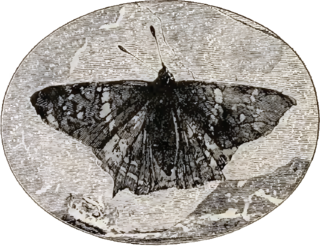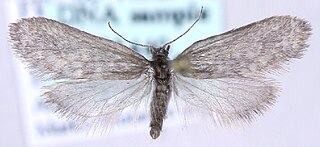
Dahlica triquetrella is a bagworm moth of the Psychidae family. It is found in Europe and North America.

The Lepidoptera fossil record encompasses all butterflies and moths that lived before recorded history. The fossil record for Lepidoptera is lacking in comparison to other winged species, and tending not to be as common as some other insects in the habitats that are most conducive to fossilization, such as lakes and ponds, and their juvenile stage has only the head capsule as a hard part that might be preserved. Yet there are fossils, some preserved in amber and some in very fine sediments. Leaf mines are also seen in fossil leaves, although the interpretation of them is tricky. Putative fossil stem group representatives of Amphiesmenoptera are known from the Triassic.

The Lichen Case-bearer is a moth of the Psychidae family. It is found in Europe and has also been recorded in North America.

Dahlica klimeschi is a moth of the Psychidae family. It is found in Switzerland and Austria.

Dahlica lazuri is a moth of the family Psychidae. It was described by Carl Alexander Clerck in 1759. It is found in France, the Benelux, Germany, Switzerland, Austria, the Baltic region, Scandinavia and Russia.
Dahlica charlottae is a moth belonging to the family Psychidae. The species was first described by Herbert Meier in 1957.
Dahlica is a genus of moths belonging to the family Psychidae.

Vladimir Viktorovich Dubatolov is a Russian entomologist, lepidopterist, Doctor of Biological Sciences, full member of the Russian Entomological Society, member of the European Lepidopterological Society, curator of the insect collection of the Siberian Zoological Museum, leading researcher at the Institute of Systematics and Ecology of Animals SB RAS (Novosibirsk), leading researcher of the Zapovednoye Priamurye. He has described a number of zoological taxa. The names of these taxa are accompanied by the author abbreviation "Dubatolov".





